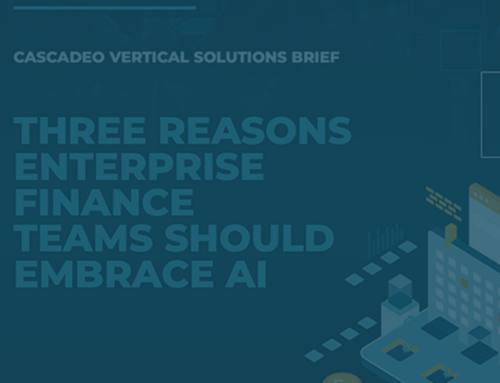
Regardless of how intimidating it may seem as a whole, the complexity of cloud migration is simply an aggregate of factors that, once identified, become solvable problems.
With the Right Approach, Cloud Doesn’t have to be Overly Complicated

Your operations are working, but you know they could be more agile, better optimized, and modernized to serve your customers and foster growth at scale if you moved to the cloud. Maybe you have a plan for migration, and have begun to assemble a team to manage the process. Even so, a seemingly endless number of questions remain. Transform your entire operation? Move some functions and keep others on prem? Multi-cloud? Hybrid cloud? In the face of so many possibilities, it’s easy to become overwhelmed. Your relationship with migration: It’s complicated. That complexity serves as one of the primary barriers to cloud adoption for organizations of all sizes and types.
As with all barriers to growth and modernization, this one must go. Regardless of how intimidating it seems as a whole, the complexity of cloud migration is simply an aggregate of factors that, once identified, become solvable problems. Let’s break down some of those factors:
It’s a big job, and it requires a substantial planning cycle. Your staff is busy keeping things running, and if you’re acquiring tech debt, as is often the case running legacy infrastructure, they’re likely stretched thin. Stepping away from an already busy operation to create a strategy for migration is a substantial challenge. But the first step to getting a handle on that intimidating complexity is to build or partner with a team that see the big migration picture. In many cases, that team consists in part or whole of a managed or professional services partner with the experience and knowledge to simplify the cloud for you.
Your current infrastructure is massive, sprawling, and poorly understood. Legacy systems have, in many cases, been growing in branching directions for years or even decades, and the larger your enterprise, the more unwieldy your existing operations have likely become, particularly if you’ve experienced mergers or acquisitions that involved combining disparate systems, data stores, and data functions. This is why a cloud migration of any type must begin with a thorough, detailed discovery and assessment process, one that reveals the full picture of your architecture so that your strategy team can begin to prioritize and evaluate which functions are business-critical, which are duplicative, and which are superfluous.
Your apps need refactored and your priorities reconsidered. The most ineffective method of cloud adoption is to simply move your data and apps as they are in a lift-and-shift migration that treats the cloud as a substitute for your on-prem servers, resulting in poor performance, higher costs, and missing out on agility and growth potential. When used correctly, the cloud is not a storage facility; it’s an opportunity to conduct your computing functions in entirely different ways that streamline, optimize, and modernize them, leaning into the value and performance of data. To take full advantage, you likely need to look at your business goals and desired outcomes and consider new ways of accomplishing them, rather than expecting a 1 to 1, legacy-to-cloud translation.
This is often the most overwhelming source of migration complexity, as it demands rethinking your entire operation. It’s also an area where outside help can be most valuable, as your staff may be entrenched in thinking of your current infrastructure as the only way to manage your operations. A partner who is fully versed in cloud-native features, functions, and architectures is more readily able to build to your goals than someone who sees your outcomes as tied to your current configurations.
Security and compliance can seem trickier in the cloud. While security and compliance function differently in the cloud than in your legacy system, they are not inherently more difficult or complicated, and as we discussed a few weeks ago, the cloud is definitely not less secure than your on-prem deployment. In fact, it’s likely more secure. But there is a catch: while all cloud vendors use a shared responsibility model to define which aspects of security are owned by the vendor and which by the customer, and all have far more resources devoted to their security responsibilities than an on-prem system could ever match, each approaches security differently, meaning that your migration needs to account for the specific security and compliance procedures and functions of your chosen cloud vendor; in the case of multi-cloud deployments, which are increasingly popular, you’ll have to work within multiple different cloud security and compliance systems.
This is another area where an expert-staffed managed services partner can be invaluable, as partners are required to maintain up-to-date knowledge of vendor policies and procedures in order to maintain certifications, and an excellent managed services partner can provide you with periodic reports assessing your compliance along with cost optimization, keeping you in good standing throughout the fiscal year.
Cloud managed and professional services partners offer additional benefits like access to special funding programs, ability to negotiate with cloud vendors, and access to high-level cloud features like serverless and advanced data management that most in-house operations don’t have the experience to implement effectively. But the biggest advantage of working with a partner is the removal of obstacles on your way to the cloud, simplifying your migration, and managing your cloud deployment so you can focus on your business.




